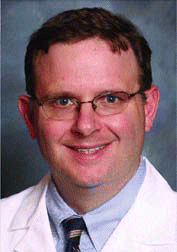When Apple introduced the first mass-produced personal computer in the 1970s, the technology was so limited that the computer had no lower-case functionality. Now, a Mac can produce hundreds of upper- and lower-case fonts, not to mention its many other applications for text, photos, music, and videos.
Explore This Issue
August 2007Currently, the use of optical coherence tomography (OCT) in otolaryngology is somewhat reminiscent of those early Apple days, but it will not stay this way for long. OCT is the next great transformative medical imaging modality, said Brian J. F. Wong, MD, PhD, Professor and Associate Director of the Division of Facial Plastic Surgery, Department of Otolaryngology-Head and Neck Surgery at the University of California, Irvine.
OCT is a rapidly evolving, noninvasive, high-resolution optical imaging technique that produces cross-sectional images (7-10 μm) of living tissues to depths of up to 3 mm, using light in a manner similar to ultrasound.1
OCT technology is based on interferometry, which was invented by Michelson more than 100 years ago, said Zhongping Chen, PhD, Professor and Vice Chairman of the Department of Biomedical Engineering at the Beckman Laser Institute at the University of California, Irvine.
To produce images of tissue structure at the histological level, OCT combines a broadband, low coherent light source with interferometry and signal processing.2 An optical beam is focused into the biological tissue and the echo time delay of light reflected from the internal microstructure at different depths is measured by interferometry (see sidebar).3
At UC Irvine, our earlier devices captured images at 1 frame/second [fps], but now we are imaging at 8 to 10 fps and will soon be able to image in real time or 30 fps, said William B. Armstrong, MD, Associate Professor of Clinical Otolaryngology-Head and Neck Surgery at the University of California, Irvine. We are keeping a database of the images in digital form, or bitmap, and can convert them to JPG or TIF files and access them through our electronic medical records.
The first clinical applications of OCT were in ophthalmology to measure structures within the globe and image retinal pathology.4 Most people recognize Professor James G. Fujimoto at Massachusetts Institute of Technology as the first to use OCT to image biological tissue in the early 1990s, said Dr. Chen. OCT applications have expanded into cardiology, dermatology, gastroenterology, and urology.
OCT allows you to analyze subsurface structures without doing a biopsy, said Dr. Armstrong. This concept of ‘optical biopsy’-that is, sampling the tissue to see what’s inside without invasively removing it-is the ‘holy grail’ of much of the current OCT research.

Leave a Reply